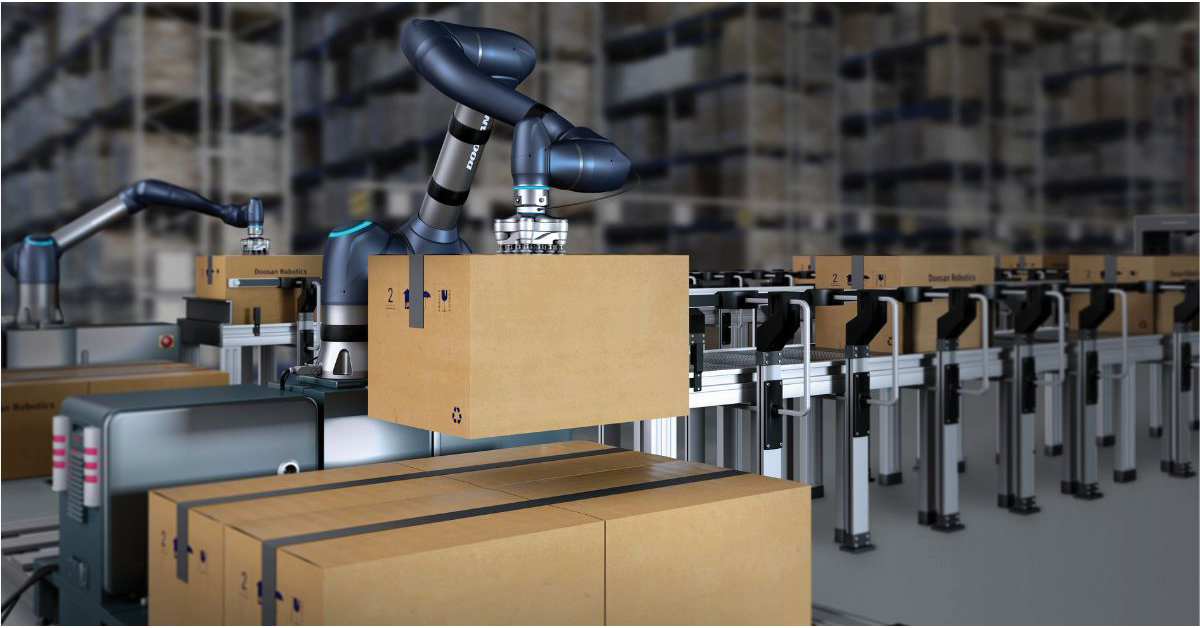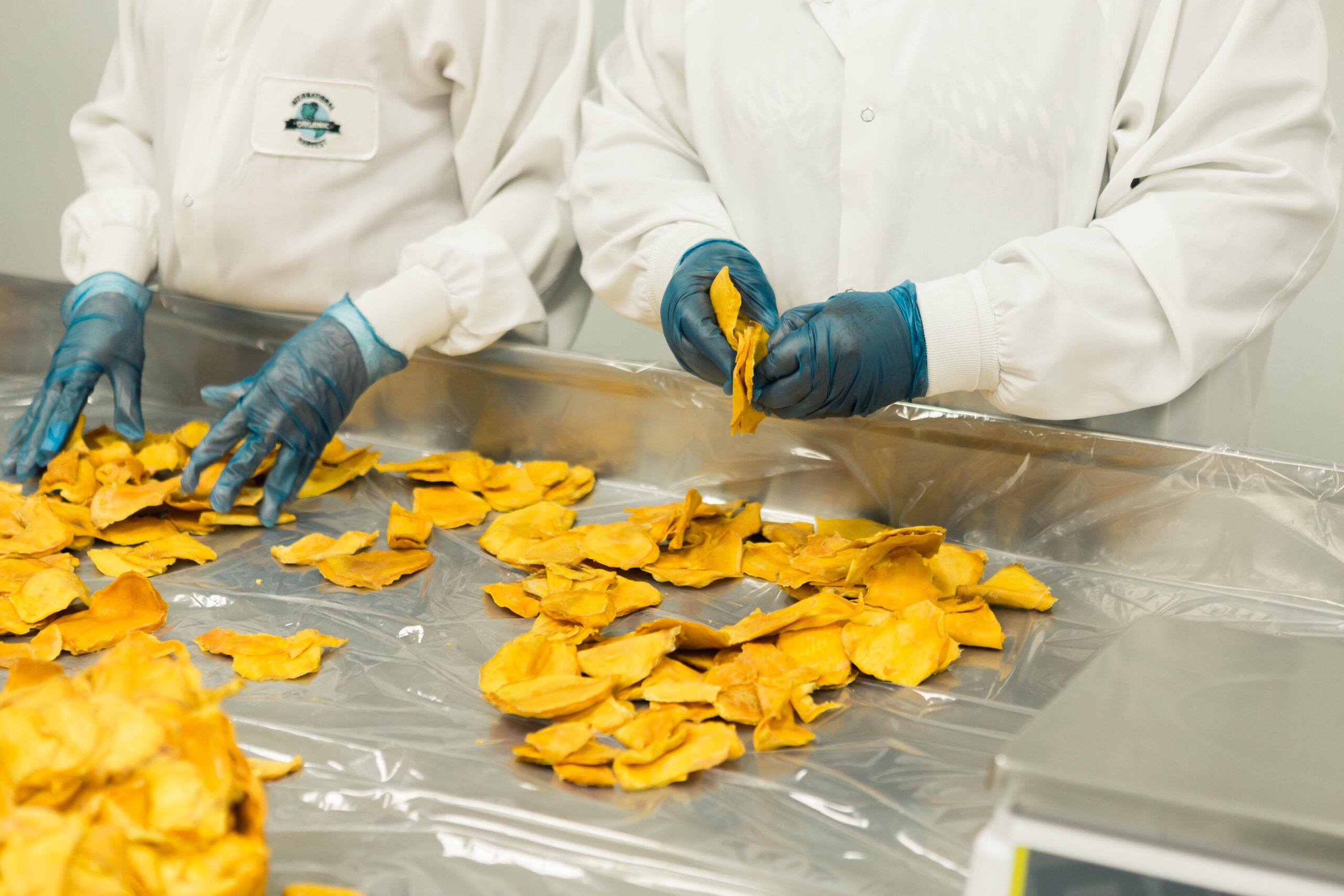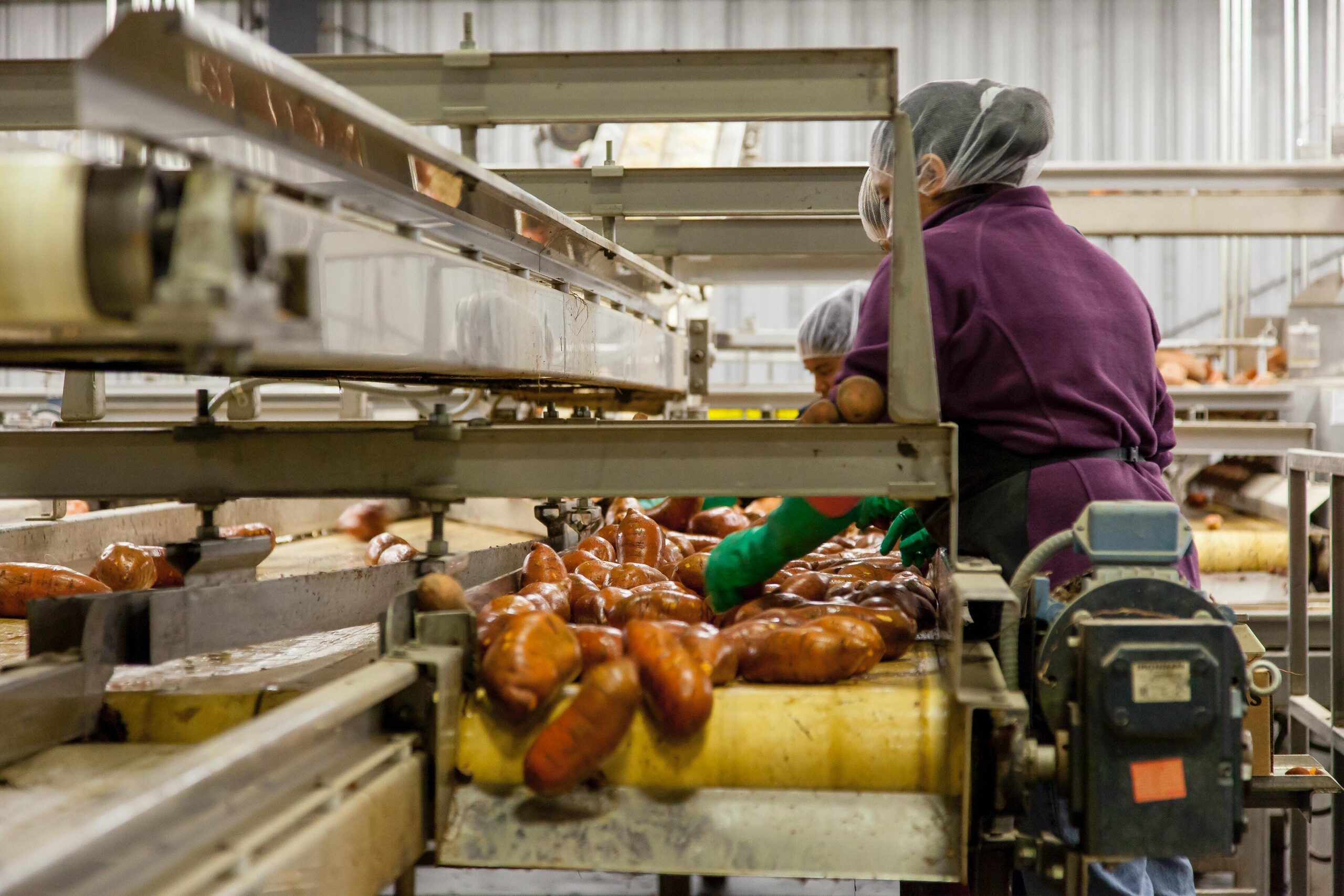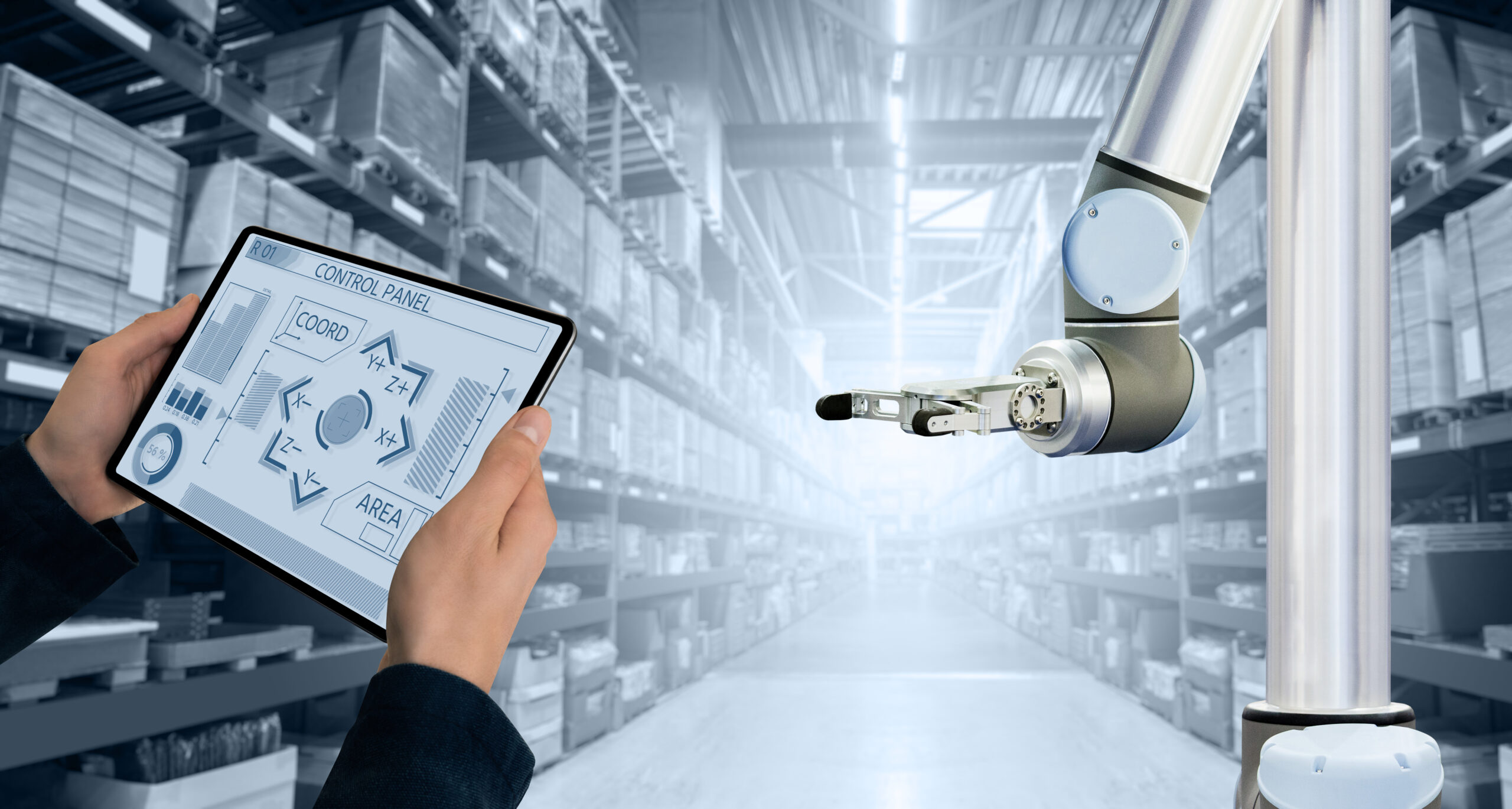

Collaborative robots in manufacturing have experienced a tremendous boom in the last decade, thanks to their versatility and adaptability. As new-generation robots controlled and supervised by humans, cobots have great potential to help manufacturing companies achieve greater productivity, higher throughput and more significant revenue increases. According to the study, all the benefits of cobots for numerous manufacturing industries will lead to an expanded market for collaborative robots, which is expected to reach $10.5 billion by 2027.
Manufacturing involves a variety of industries, skills, and tasks that are complex, dangerous, and tedious. These require concentration and accuracy at all times, so it is not possible to fully automate all manufacturing. Under these conditions, humans and machines should work together in factories, which is finally possible, thanks to cobots. Cobots are equipped with inherent safety features that allow them to work right alongside human operators. Below, we summarize the most common applications for cobots in manufacturing of all sizes.
Material handling and removal
Material handling and removal are essential in the manufacturing industry, but they're also the most dangerous tasks. In particular, working with materials such as metals, plastics and other substances can pose a great risk to workers. This repetitive and dangerous process involves moving short distances within a building or between a transport vehicle. As well as the plant and securing, storing, and controlling the materials. Even though material removal and handling is a mandatory part of the manufacturing industry, it's a repetitive activity that can lead to strain injuries and errors due to fatigue.
Material handling and removal includes tasks such as packaging, palletizing, grinding, deburring, milling, routing and drilling that can be easily automated and performed by cobots. Collaborative robots provide integrated force sensing for consistent and accurate tool placement to reduce waste and scrap and optimize the process. Many manufacturing companies are improving efficiency and productivity by using collaborative robots for:
- loading and unloading materials
- removing and placing materials
- sorting and organizing materials
- packaging and labeling materials
- transporting materials
Screwing, inserting and assembling items
Thanks to the right adapter mechanisms, the collaborative robot can handle the assembly of plastics, woods, metals or other materials. Assembly is a common process in various industries where components are bolted together and installed. Using a collaborative robot greatly improves the productivity and quality of the assembly line. At the same time, it ensures worker safety.
Cobots can move to the calculated screw position and repeat the process for all screws. In addition, they are easy to programme so that all screw positions can be determined immediately. This saves additional time during subsequent screw driving operations. Thanks to the precise gripper and repeatability, collaborative robots are perfect for automating fast and accurate handling operations. This not only reduces production costs, but also increases productivity.
In addition, tasks such as screwing, inserting and assembling are often performed in an uncomfortable posture, so the use of cobots can make workplaces more ergonomic for humans.
Sanding, polishing and finishing applications
Finishing tasks in manufacturing often require a high degree of accuracy, force, and work with various types of hand tools. These are time-consuming because they involve working with different shapes, surfaces, and materials, and therefore require a high level of concentration from workers. This is the reason why manufacturing companies are starting to use cobots for these delicate tasks.
Thanks to their ability to apply the necessary force, repetition and accuracy, collaborative robots are perfect for finishing tasks such as polishing, grinding and deburring. In addition, collaborative robots are equipped with sensors and special grippers that allow them to apply continuous force to the surface and estimate the contours of the surface very accurately.
For example, by eliminating sharp edges on a workpiece, cobots can improve speed and precision and prevent injuries when machining the workpiece.
Welding
According to the American Welding Society, the welding industry will face a shortage of about 400,000 welders by the end of 2024. Cobots are designed to work alongside humans, and thanks to their advanced sensors and dexterous manipulators, collaborative robots can handle even the most delicate welding tasks with ease. They're also much faster and more precise than human workers, which means they can help increase productivity and efficiency in the welding process.
Collaborative robots are very versatile and can weld parts of all shapes and sizes. They also offer a wide range of intelligent functions so that they can be used in arc, solder, TIG, laser, plasma, ultrasonic and spot welding.
Machine tending
The most popular use of collaborative robots in manufacturing automation is machine tending. Collaborative robots can service machines such as CNC machines, injection molding machines, press brakes, punch presses and others to free up employees for more valuable tasks.
In machine tending, a human worker loads parts into a machine to complete a task. The worker then removes the finished product and loads another part. Not only does this waste a tremendous amount of time that could be used more productively, but it also increases the risk of injury and accidents due to repetitive tasks.
Collaborative robots help remedy this by assisting operators with tasks such as loading the machine or removing finished products. This can help improve operator comfort and safety while increasing productivity. In injection molding, for example, manual work is subject to natural variations that can lead to poorly built or malfunctioning parts. Collaborative robots, on the other hand, make it easy to maintain precision and handle fragile parts gently, as automation can prevent cosmetic and structural defects. Using collaborative robots in the injection molding process also helps ensure that parts are properly manufactured, accurately measured and molded to completion.
Quality control
In all manufacturing industries, the most important thing is the final product that gets into the hands of the customer. Workers are expected to perform quality control on all units without losing focus. Is it possible for a human worker to repeat the same movement over and over for many hours with exactly the same precision? We don't think so. This is the main reason why numerous manufacturing companies are using automation for quality control. Collaborative robots, let industries increase measurement accuracy and maintain a high level of product quality.
By regularly inspecting products, collaborative robots can help ensure that only the highest quality products are delivered to customers. Not only does this contribute to higher customer satisfaction, but it can also save the company money in the long run by reducing the need to replace defective products. Cobots can even detect defects that human inspectors would miss. This is because cobots are able to perform inspections with a much higher degree of accuracy and consistency than humans. As a result, they can help improve product quality while reducing the time and resources required for inspection.
On the other hand, collaborative robots can do this tedious task with 100% accuracy without getting exhausted or bored. The robots can detect even the smallest errors and notify the relevant staff before the packaging process begins. The result is that companies with collaborative robots achieve lower operating costs, higher production quality and faster cycle times.
Collaborative Robots in Manufacturing - Conclusion
In today's world, manufacturers are under constant pressure to respond to the ever-evolving market and stay ahead of the competition. Despite labour shortages, the manufacturing industry faces high demand for mass customization, faster production, quality expectations, product variability and more. Collaborative robots offer to manufacture great solutions to all production challenges by combining human skills and ingenuity with the speed and precision of machines. In this way, cobots maximise production on the shop floor while ensuring product quality and employee and customer satisfaction.
If you’re interested in learning more about how collaborative robots can benefit your business, book a demo with us today. We would be happy to show you how these amazing machines can help increase efficiency and productivity in your workplace.





